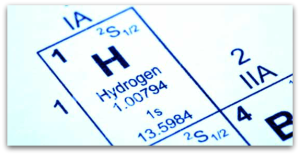 Recently, a small explosion occurred underneath the sand at a Rhode Island beach. When state police and a bomb squad couldn’t figure out what caused the blast, researchers from the University of Rhode Island decided to make an attempt at solving the mystery.
Recently, a small explosion occurred underneath the sand at a Rhode Island beach. When state police and a bomb squad couldn’t figure out what caused the blast, researchers from the University of Rhode Island decided to make an attempt at solving the mystery.
The school’s oceanography interdisciplinary team—made up of researchers with expertise in everything from geology to chemistry—was able to pinpoint an unlikely culprit in the beach explosion: hydrogen.
An Unlikely Investigation
The researchers first began to suspect hydrogen when they discovered an underground uncorroded copper cable at the site, which could create hydrogen though an electrochemical process.
“The copper was like a shiny new penny, and the steel was silvery, even though it had been in seawater for many years,” said Professor Arthur Spivack of the University of Rhode Island. “That told me that it was consistent with there being a slight negative voltage in that end of the cable, which protects it from corroding but also could produce hydrogen.”
This from University of Rhode Island:
When he looked at the results of the gas chromatography, Spivack knew the mystery was solved. It showed exceptionally high levels of hydrogen in a few pockets just beneath the area of the explosion, far higher levels than [they] had ever previously measured. Hydrogen is typically recorded at just a few parts per million, but in the beach sand there were up to 50,000 parts per million, which could easily have become flammable. Methane, the other gas that was hypothesized as the cause of the explosion, was found at barely detectable levels. When additional sediment cores were collected and analyzed, the results were the same.
A Hydrogen Explosion
Essentially, a simple spark caused from static electricity, a cigarette ember, or something similar could have ignited the hydrogen.
And hydrogen does not combust like traditional gasoline. A hydrogen combustion would not involve visible flames, which explains why there were no reports of fire or burn injuries.
Additionally, the byproduct of a hydrogen explosion would be water, which also explains why no residue was left.
[Image: Properties and Uses of Hydrogen]To find out more hydrogen and its potential applications, make sure to attend the 228th ECS Meeting this October in Phoenix, AZ!


